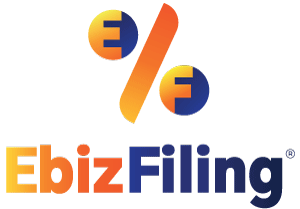
-
June 13, 2023
Dissolving a Family Business: A Step-by-Step Guide to a Smooth Process
Introduction
Dissolving a family business is an emotionally challenging and complex process. Family businesses hold a unique place in the business landscape. Built on a foundation of shared values, deep relationships, and a common vision, these enterprises often transcend generations. However, there are instances when the decision to dissolve a family business becomes inevitable. Whether due to changing market dynamics, family disputes, or personal circumstances, the process of dissolving a family business requires careful consideration and planning. In this article, we will explore the key factors and considerations involved in dissolving a family business.
What does Family Business mean?
Family business ownership refers to a specific form of ownership structure where a family or multiple families have significant control and ownership over a business enterprise. In this ownership model, the business enterprise is operated, managed, and owned by family members, often spanning multiple generations.
Ownership Structure
The ownership structure may vary, ranging from sole proprietorships or partnerships to corporations with family members holding majority shares. The family business type of ownership is characterized by several unique aspects:
-
Family Involvement: Family members are heavily involved in the ownership and operation of the company. They give the business enterprise a sense of continuity, common values, and a long-term outlook.
-
Control and Decision-Making: Family-owned businesses typically have strong family ownership, which frequently results in majority ownership or positions of power. Family members take part in important business decisions that affect the direction and expansion of the enterprise.
-
Succession Planning: Planning for the smooth transfer of ownership and management from one generation to the next is a priority for family businesses. The continuation of the company and the preservation of family values are guaranteed by succession planning.
-
Family dynamics: In the workplace, decisions, communications, and conflicts can be influenced by family relationships and dynamics. For the family business to succeed and function harmoniously, personal and professional interests must be balanced.
-
Long-Term Focus: Family-owned businesses frequently place a strong emphasis on long-term viability and preserving the company for future generations. They might be more concerned with leaving a legacy and generating possibilities for the family than they are with making quick money.
How can a family business be dissolved?
Dissolving a family business involves a series of steps and considerations to ensure a smooth and orderly process. Here is a structured approach to dissolving a family business:
-
Analyze the need for dissolution:
-
Evaluate the financial performance and viability of the business.
-
Consider changing market dynamics, family disputes, or personal circumstances that necessitate dissolution.
-
Engage in open and honest discussions with family members to gauge collective sentiment.
-
Plan and communicate:
-
Create a thorough plan for the dissolution procedure that includes deadlines and roles.
-
Encourage open communication within the family to resolve issues and set expectations.
-
Maintain transparency throughout the process to minimize conflicts and misunderstandings.
-
Seek professional guidance:
-
Consult legal and financial professionals experienced in family business dissolution.
-
Understand the legal requirements, tax implications, and regulatory obligations associated with dissolution.
-
Gain insights into the most efficient and effective methods of winding down operations.
-
Address financial and legal obligations:
-
Settle outstanding debts, loans, and financial obligations.
-
Fulfill contractual agreements with suppliers, customers, and other stakeholders.
-
Comply with legal and regulatory requirements, such as filing appropriate paperwork and notifying relevant authorities.
-
Employee Transition and Communication:
-
Communicate the decision to employees with empathy and transparency.
-
Provide clarity on the timeline, roles, and responsibilities during the dissolution process.
-
Offer support to employees, such as job placement assistance or severance packages, to facilitate their transition.
-
Asset Valuation and Distribution:
-
Engage professional appraisers to assess the fair market value of business assets.
-
Determine the most equitable plan for asset distribution among family members or external parties.
-
Consider selling assets, transferring ownership, or liquidating assets to fulfill financial obligations.
-
Closure and Reflection:
-
Celebrate the achievements and milestones of the family business.
-
Express gratitude to employees, customers, and stakeholders for their support.
-
Reflect on lessons learned and identify opportunities for personal growth and new ventures.
Conclusion
The dissolution of a family business can be emotionally challenging. It is important to approach the process with empathy, open communication, and a shared commitment to preserving family relationships. Seeking professional guidance and involving all stakeholders in decision-making can help ensure a smooth and successful Family Business dissolution.
Writer’s Choice: Dissolution of Partnership Firm and Settlement of Accounts
Dissolve Your Firm
Dissolve your Firm and stop complying with routine compliances.
About Ebizfiling -










Reviews
Aditi Doshi
18 Mar 2018The team really puts effort to help you with the procedure. They are very efficient with their work. Kudos to the team!
Devang Panchal
09 Sep 2018They helped me with my company’s name change and I was quite satisfied with the way they served me. I am surely coming back to you in case of any compliance problem.
Jobin Mathew
19 Nov 2021I reached ebizfiling for DSC renewal , Ms anitha KV assisted in renewal it was done on timely and hassle free.
September 30, 2025 By Dhruvi
CA vs CS Certificates in India – Types, Fees, and Compliance Explained Introduction Certificates issued by Chartered Accountants (CAs) and Company Secretaries (CSs) play a pivotal role in India’s compliance ecosystem. Whether you’re a startup raising funds, a listed company, […]
November 7, 2025 By Dhruvi
CS Certificates in India – Types, Information Required, Fees & UDIN Norms Introduction In India, Company Secretary (CS) certificates are critical for compliance with the Companies Act, SEBI Regulations, and FEMA requirements. Banks, regulators, and investors often require certified confirmations […]
September 30, 2025 By Dhruvi
Certificates in India – Types, Information Required, Charges & UDIN Norms Introduction For many financial and compliance matters in India, a Chartered Accountant (CA) certificate is not just a formality but a mandatory requirement. Whether you are a startup applying […]